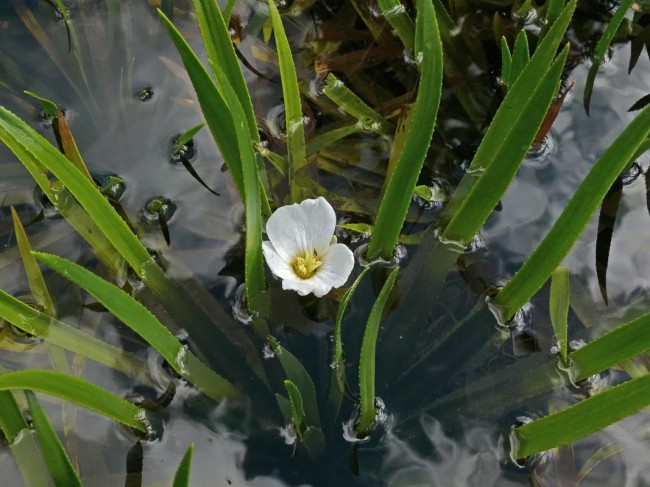Crabber
Home " Floating plants " Crabber
Crab crab. Floating oxygen plant with good properties.
This is a pond plant that one does not come across very often. A shame, because this floating oxygen plant has some particularly good properties! Crab apple looks a bit like a Yucca; it has toothed, sword-shaped leaves that grow partly below and partly above water and can reach up to 50 cm in length. Due to these serrated leaves growing in a rosette, this aquatic plant provides shelter for amphibians and fish. Like Hornleaf this plant also provides protection for young fish and frogs.
In the pond, Crabber has some great advantages. The plant is allelopathic. It secretes a substance that inhibits the growth of floating algae. In addition, it grows quickly and takes the nutrients needed for this growth directly from the water column. As a result, it additionally competes with the floating algae in your pond. Since this floating plant also blocks out sunlight, the algae have a formidable competitor! Also well-known oxygen plants as Waterweed are known for this algae-inhibiting effect. The advantage of the toothed leaves is that Crabber is mostly left alone by Koi and other carp-like creatures.
A plus, of course, is its cute inflorescence with its white flowers.

Crabbear in the Netherlands and Belgium
Krabbescheer is a plant native to the Netherlands and Belgium. Because it grows in clean, not too nutrient-rich ditches and is sensitive to environmental pollution, this plant has been hit hard in recent decades.
This is not down to the growth rate, by the way. Because this plant propagates vegetatively, a suitable ditch can become full in a single season! Incidentally, this vegetative propagation is a nice sight; each plant then carries one or two small Crabapple skulls with it.
In late autumn, the plants sink to the bottom, where they remain throughout the winter before coming back to the surface in spring to continue growing.
